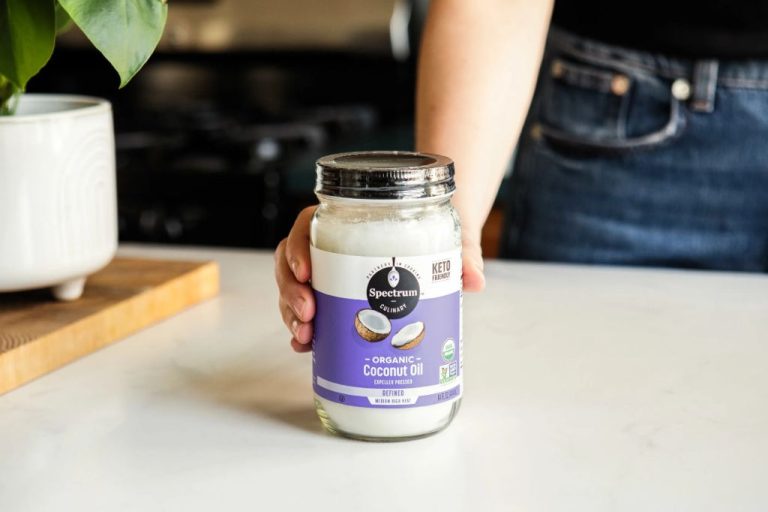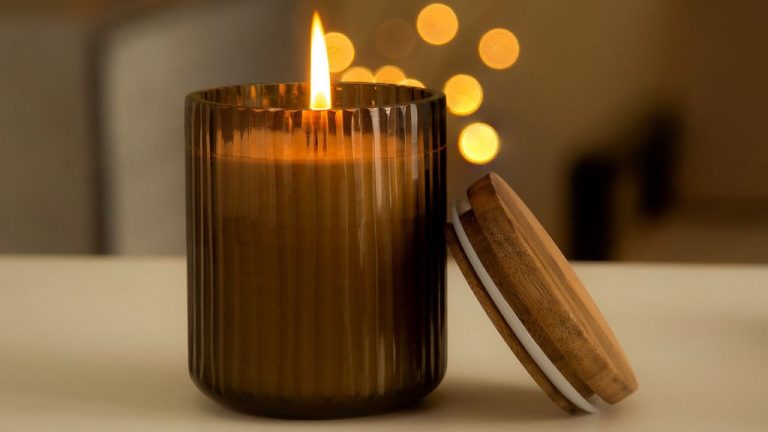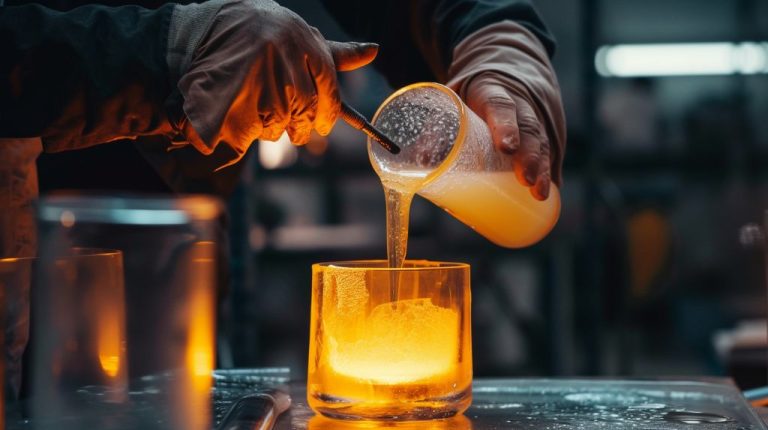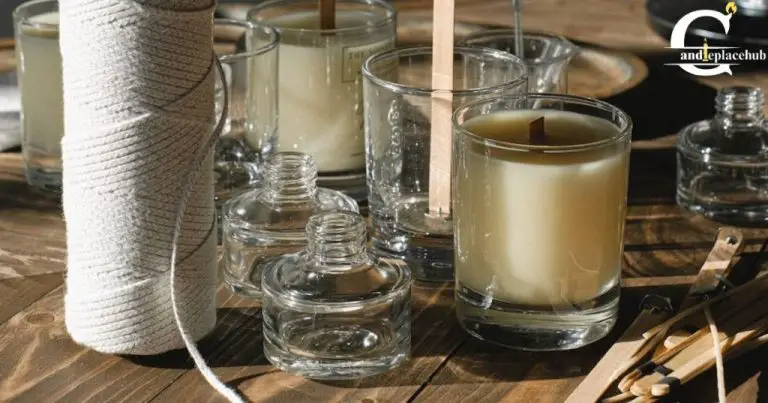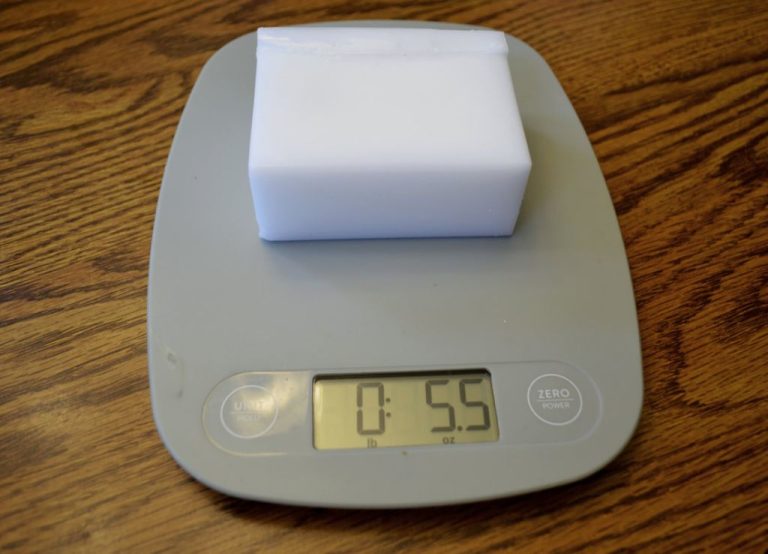Can Candle Wax Be Melted In Pot?
Candle wax is a substance made from oils, fats, and waxes that has been specially formulated to burn cleanly and evenly in candle making. Wax comes in flakes, blocks, or pellets and needs to be melted down before it can be used to make candles. Melting the wax allows it to be poured into candle jars and molds so it can harden into the proper candle shape. Common types of candle wax include paraffin, soy, beeswax, and gel wax. Each type has different melting temperatures and properties that impact the candle burning process.
Melting Candle Wax
One of the easiest ways to melt candle wax is by using a double boiler. To do this, fill the bottom pot with a few inches of water and place it over low to medium heat. Rest a second pot or container inside the first pot, making sure the bottom does not touch the water. Add your candle wax to the top container. The steam from the simmering water will gently melt the wax.
You can also melt candle wax directly in a pot on the stove. Choose a heavy bottomed pot and add your wax. Set the heat to low and stir frequently as the wax melts. Make sure to monitor the temperature carefully, as direct heat can scorch the wax if it gets too hot. Remove the pot from heat as soon as all the wax is fully melted.
Regardless of the melting method, be patient. It may take 15-30 minutes for the wax to fully melt. Avoid the temptation to turn up the heat too high, as this can burn the wax. Stirring occasionally will help the wax melt evenly. Once melted, remove from heat and let cool slightly before pouring into molds or containers.
Choosing the Right Pot
When melting candle wax, it’s important to use the right type of pot. The material, shape, and size of the pot can impact how quickly and evenly the wax melts.
Most recommend choosing a sturdy stainless steel or enameled pot to melt wax in. Stainless steel conducts heat well, helping the wax melt evenly. Enameled pots also work well and prevent sticking. Avoid using aluminum pots, as they can discolor wax.
In terms of shape, a pot with straight sides, rather than curved sides, allows you to easily pour melted wax into containers and molds. Wide, shallow pots also provide more surface area for the wax to melt quickly.
For size, choose a pot that’s about twice the volume of the amount of wax you want to melt. Having extra room prevents wax from boiling over. A 2-quart pot is ideal for melting 4-6 pounds of wax.
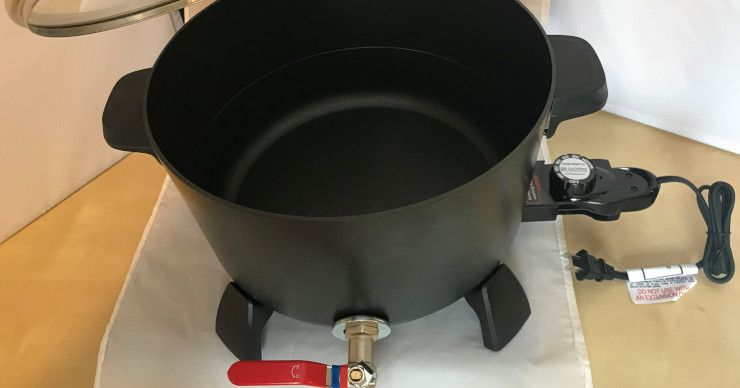
Additionally, make sure to use a pot with a pouring spout or lip. This allows for neatly pouring the liquid wax into molds or containers.
Melting Temperature
The melting temperature for candle wax can vary depending on the type of wax used. According to The Spruce Crafts, common wax types and their melting points are:[https://chickensintheroad.com/classic/house/crafts/so-you-want-to-make-candles-basic-supplies-to-get-started/]
- Paraffin wax: 120-130°F
- Beeswax: 143-145°F
- Soy wax: 115-135°F
- Palm wax: 126-143°F
- Gel wax: 200°F
It’s important to know the melting point of the specific wax you are using. Melting the wax at too high of a temperature can burn it. Melting at too low of a temperature may not fully melt the wax. Refer to manufacturer instructions for recommended melting points.
Melting Safely
When melting candle wax, it’s important to take proper safety precautions to avoid overheating and potential burns or fires. Here are some tips for melting wax safely:
Use a double boiler or makeshift double boiler to gently melt the wax. This prevents the wax from getting too hot. Direct heat can quickly overheat wax and poses a fire risk (Amazon).
Never leave melting wax unattended. Stay nearby and watch the process to ensure the wax doesn’t overheat. If it starts smoking, immediately remove from heat (Amazon).
Make sure your pot or melting vessel is on a heat-safe surface. Melting wax can get hot enough to damage countertops. Use a hot pad or trivet underneath (Amazon).
Keep a lid nearby to smother any flames if the wax catches fire. Fires can occur if the wax gets too hot. Have a plan to quickly and safely extinguish (Amazon).
Allow melted wax to cool before pouring into containers. Hot wax can cause burns. Let it cool until warm but not hot to the touch (Amazon).
Keep children and pets away during the melting process. The hot wax poses a safety risk for kids and animals (Amazon).
Use warning labels on your homemade candle containers. This alerts others that the product contains hot melted wax and should be handled carefully (SEWACC).
With some simple precautions, you can safely melt wax for candle making and other projects. Just be sure to constantly monitor the wax as it heats and avoid exposing it to direct high heat that can cause overheating issues.
Storing Melted Wax
Once you have finished melting your wax, you will need to store it properly for later use. Melted wax can be stored in a cool, dry place like a closet or cupboard. According to Suppliesforcandles.co.uk, melted wax should be kept in an airtight container away from heat sources like direct sunlight or radiators 1. This prevents the wax from sweating or losing its scent. The wax can be stored this way for several months.
When you are ready to reuse the melted wax, you will need to remelt it. Be careful not to overheat the wax, as this can cause discoloration. Melt the wax slowly and stir it frequently to distribute the temperature evenly. According to Nikura.com, wax should not be melted at temperatures above 75°C or 185°F 2. Once melted, you can pour the wax into molds or containers to make new candles, wax melts, or other projects. Proper storage and remelting will help ensure your wax lasts through many uses.
Additives
There are various additives you can include in melted wax to enhance candle making. Some popular additives include:
Scents
Adding scents is one of the most common additives for candle making. You can add essential oils or fragrance oils to your melted wax. According to Do’s and Don’ts of Candle Making, it’s recommended to add fragrance when the wax is between 180-185°F for soy and paraffin or 200-205°F for palm wax. The fragrance oil blends with the wax as it cools and solidifies, infusing the candle with the desired aroma.
Dyes
Candle dyes are another popular additive to produce candles in different colors. The Complete Guide to Fragrance Oil in Soy Candles recommends adding liquid dye to the melted wax before adding fragrance so the dye has time to fully incorporate.
Glitter
Adding glitter to the wax creates sparkly, shimmering effects in the finished candle. Fine glitter tends to work best. Sprinkle glitter into the melted wax, let it fully incorporate, then follow with adding fragrance.
Embeds
Wax embeds are small decorative items suspended in the candle wax, like seashells, coffee beans or small flowers. Add embeds after fragrance so they don’t sink to the bottom of the candle. Arrange embeds creatively for a one-of-a-kind design.
Projects
Melted candle wax can be used for a variety of crafting and DIY projects. Some popular projects include:
Candles – You can reuse candle wax to make new candles. Melt down the old wax and pour it into candle molds or jars to create new candles. This lets you repurpose used candle wax into fresh, homemade candles.
Wax melts or tarts – Melted candle wax can be poured into silicone molds to make wax melts or tarts. These are a popular candle alternative that are heated in a wax warmer to release fragrance. Making your own wax melts allows you to reuse old candle wax in a new form.
You can add coloring or essential oils to personalize reused candle wax for any project. Getting creative with melted candle wax reduces waste and makes use of leftover wax.
Troubleshooting Candle Making Issues
Making candles can sometimes lead to problems with melting, appearance, and scent. Here are some common issues and how to fix them:
If you notice your candle has sinkholes or small holes after burning, this is likely due to the fragrance oil cooling and contracting at a faster rate than the wax. To prevent this, avoid pouring candles too hot and cool them slowly. You can fix existing sinkholes by re-melting the wax and repouring the candle. Be sure to maintain the proper pouring temperature. See: CandleScience.
If your candle has poor scent throw or the scent fades quickly, the wax may not be holding the fragrance oil well. For soy candles, use a wax with a higher melting point or add a small amount of vybar or parasoy to help “anchor” the scent. Make sure not to add more than the recommended amount of fragrance oil. See: ScentSoapsAndCandles.
Candle wax can discolor or develop a “frosted” look after burning due to the fragrance ingredients interacting with the wax. This is harmless, though undesirable visually. Use an oil/wax stabilizer additive to minimize discoloration. Test your wax and fragrance oil combination before production to check for issues.
Conclusion
Melting candle wax in a pot is a simple and convenient way to repurpose old candles, make homemade candles, or use wax for arts and crafts projects. With the right type of pot, melting process, and safety precautions, anyone can easily melt candle wax at home.
To summarize, choose a metal pot or double boiler to evenly melt the wax at a low temperature below 200°F. Select pillar or votive candles made from paraffin, soy, or beeswax, and chop or grate them to speed melting. Stir the wax occasionally as it melts. For safety, work in a well-ventilated area and avoid contact with wax vapors and splatter. Store melted wax in heatproof containers. Finally, add scents, dyes, or other additives as desired to create candles, wax melts, or other projects with the melted wax.
With proper precautions, melting candle wax in a pot allows endless creative possibilities for homemade candle making and crafting. Follow these tips, and enjoy repurposing candle wax for fun and functional DIY projects.

